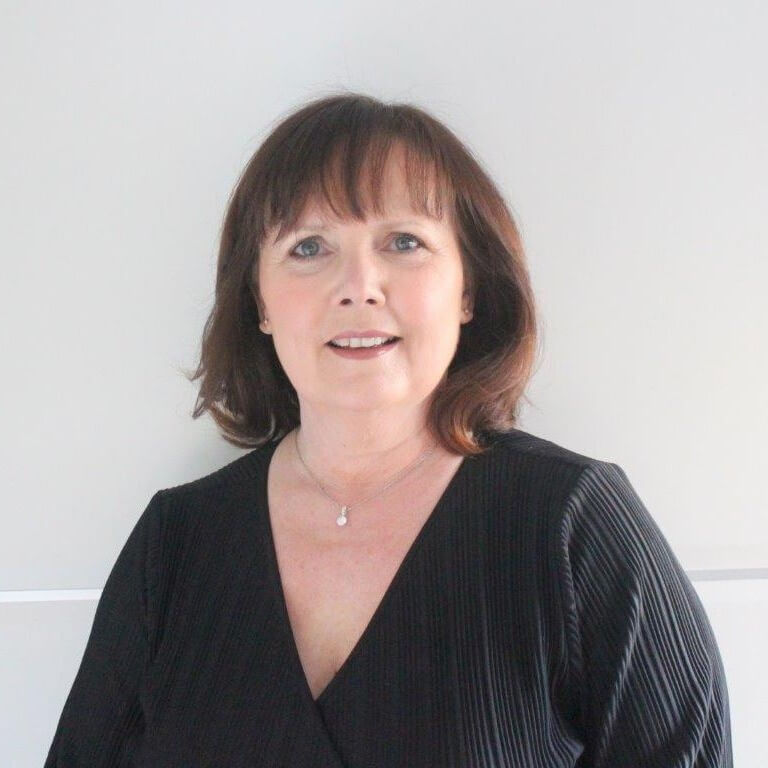

How to be good at sales: 13 tips to improve sales performance

Have you ever wondered about what it takes to be good at sales?
Generic advice on being a better communicator is often too vague. That’s why we sat down with Jo Collins, Founder & Managing Director of Sales Performance, to talk about all things sales.
This post is an edited summary of the interview.
The sales basics
We need to look at sales for what it is: communication, helping people, and building trust. Sales is about people. The minute you lose that human touch, you’re in the business of transactions, not in the business of developing customer relationships.
Technology, regardless of how brilliant, should be viewed as a helping aid, but not to the detriment of customer engagement. AI can help salespeople be more efficient but it can’t replace all human aspects of the sales job.
1. Let customers do the talking
To be successful in sales, you need to be comfortable with just being in front of a customer and allowing them to talk. If they’re talking, you’re gaining information.
I recommend that companies adopt a two-call process. The first call should be focused on listening and gaining insights. Once you’ve gathered enough, you can say something like: ‘You’ve given me really good insights. I want to take this back to my team to find out how our service can help you best. With that in mind, can we agree that I come back here with some suggestions for you to consider next week?’
Your second call will be about presenting a proposal based on everything you’ve learned.
2. Focus on sales activities
Top-performing salespeople focus on activities and track all of them in their CRM.
You can’t control the market but you can control what you do every day. How many calls are you making? How many touchpoints should you be creating? How many opportunities is your team opening up?
3. Seek strategic partnerships
Strategic partners operate in industries different from yours but share common interests or customers.
For example, a solicitor could be an ideal strategic partner for a property estate management company. Both businesses serve similar customers and can introduce each other to clients.
Regardless of how long you’ve been in business, you need strategic partners.
4. Find your ideal customer
Not every customer is a good fit for your business—and you can’t be everything to all customers. It takes a bit of courage to acknowledge this.
To be good at sales, you need to gain clarity on who your ideal customer is. Think about who allows you to do your best work. What do they look like? Are they a family business? Are they a business with ambition?
Business with existing customers
No matter what industry you’re in, customers will come and go—but you still need to nurture the connection you have. Sales is not only about new business development but also about building relationships with existing customers.
5. Ask for reviews
Your existing customers already know and trust you, which makes them far more likely to purchase a new product or service from you.
They can also become your champions. Ask your happy customers for a Google review. These reviews can help you attract new business and improve your visibility in organic search results.
6. Upsell and cross-sell
You’ve also got to think about nurturing existing customers.
For example, take 10 customers. Look at what they’re buying from you, and then ask yourself: ‘What other product or service would go hand in glove with what they are already buying from us?’
7. Ask for referrals
Ask existing customers whether they know anyone who would benefit from your service. There’s a famous quote by Dale Carnegie that says that only 11% of salespeople ask for a referral although 91% of happy clients will give one.
If the word ‘referrals’ feels a bit awkward, don’t use it. Instead, replace it with: ‘Based on your experience with us, do you know anyone else we could do a really good job for?’
New business development
Creating a business development process can be challenging. That’s why I usually recommend that companies start by identifying a few prospects, focusing on those who are least critical to them. Use this engagement to build your confidence. After two or three interactions, you’ll warm up, and your confidence will naturally grow.
8. Create multiple touchpoints
Many salespeople give up after just 3–4 follow-ups, but buyers today are taking longer to make decisions. What used to be 3-4 weeks can now stretch to 9-12. On average, it takes 5–12 touchpoints with a prospect before they’re ready to commit.
That’s why you need a touchpoint plan. Your touchpoints could include an email, an event invitation, connecting on LinkedIn, and so on. Consistent interactions keep you top of mind while your potential customer is making up their mind.
9. Keep conversations organized
Write down five key questions based on your research. It’ll help you prepare for a meeting with a prospect and stay in control of the conversation.
I often recommend BANT. It’s an acronym and a brilliant checklist that reminds you to consider four things:
Budget: Have I asked or discussed the budget with the customer?
Authority: Am I dealing with the key decision-makers or am I relying on somebody else to sell my story up the chain?
Need: Have I got clarity on what the customer needs?
Time: Have I scheduled time for a follow-up call or what are my next steps?
10. Make it easy for customers
Do you enjoy being sold to? When I ask my clients this question, the answer is almost always no—most people don’t like being sold to. But what about buying? Do you enjoy that? The answer is often yes.
As salespeople, our goal is to help customers buy in a way that feels natural and comfortable for them. We need to make the buying process as easy as possible. To achieve this, listen to what your customers are sharing during your conversations.
Motivation in sales
There are things salespeople can introduce into their weekly plan that can help them be smarter with their time and make their job a bit easier.
11. Introduce a power hour into your routine
The power hour is about having dedicated time in your calendar and blocking it off for focused work.
If you’re working on new business development, set aside one hour each day. Come to that hour fully prepared so you can start straight with the hard work of picking up the phone and selling, rather than losing time looking for emails or phone numbers.
Your first couple of calls might not be perfectly polished, but as you keep going, your confidence will grow.
12. Take time to celebrate success
In sales, we engage with a customer, win the business, and move quickly on to the next task. It’s a fast-paced process. However, it’s important to take a moment to celebrate your success.
When challenging times come (as they inevitably will), having a record of your wins can be a reminder of your achievements. As we get busier and more established, it’s easy to forget what made us successful in the first place.
13. Don’t be crazy busy
Business owners and sales teams often ask me, ‘I’m so busy. How do I manage to do it all?’ I always recommend a fabulous TED Talk by Darria Long and her podcast Crazy Busy. As an ER doctor, she shares insights on triaging a crazy busy life—and these principles can easily be applied to business too.












